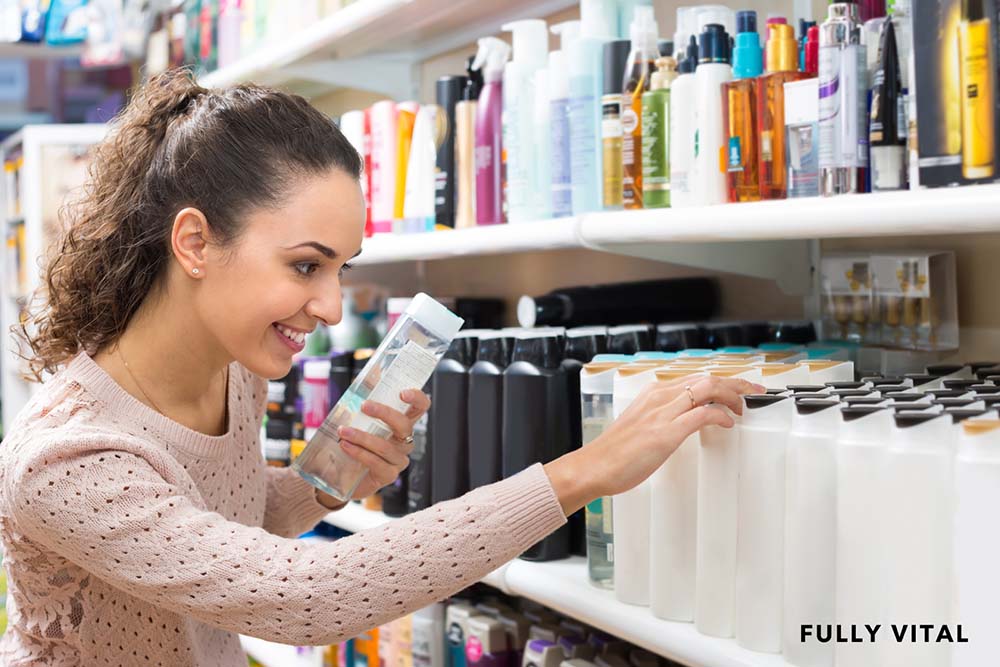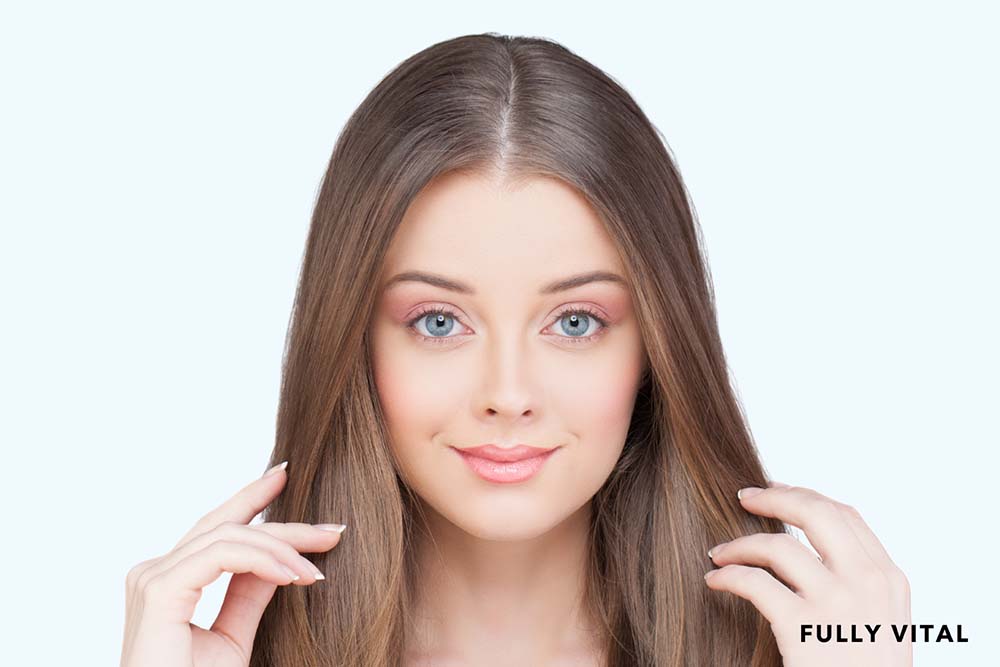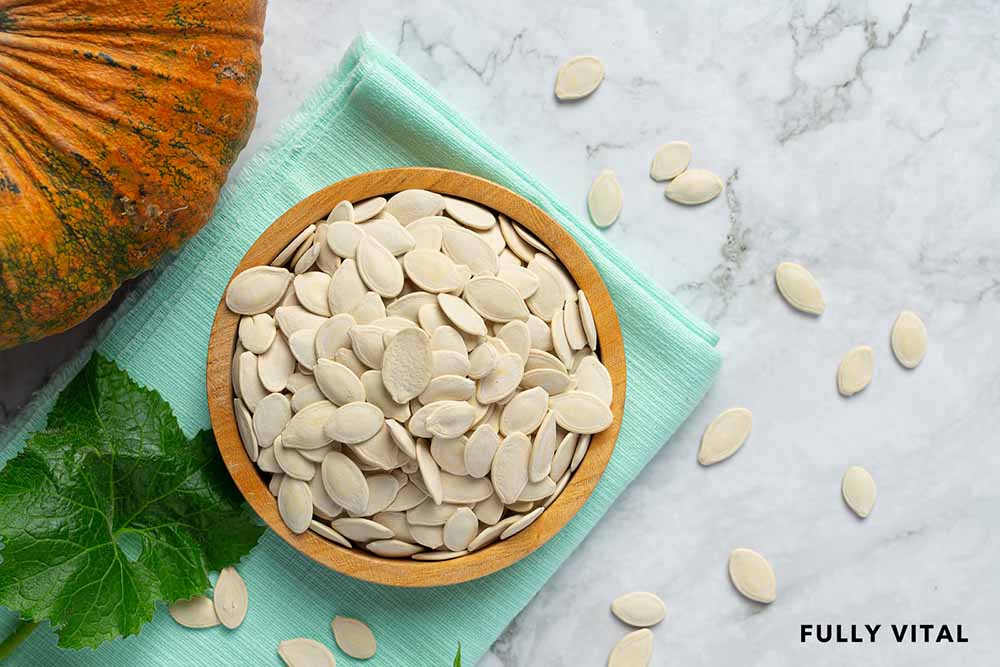
Phthalates: Unlocking The Secrets To Healthy Hair Growth
Are you searching for the key to luscious, vibrant hair? Look no further than phthalates, the unsung hero in the realm of hair growth products.
In this article, we'll explore the ins and outs of phthalates, their importance in stimulating hair growth, how they work, and their benefits.
We'll also discuss any downsides associated with their use and present you with alternative options to consider. So, grab a cup of tea and let's dive into the world of phthalates.

I LOVE MY HAIR NOW
FullyVital hair serum and hair vitamins made tremendous improvements in my hair. I truly love my hair now.
Dorit S.,
What Is Phthalates?
Phthalates, pronounced "THAL-ates," are a group of chemicals commonly used in hair growth products.
They serve as plasticizers, enhancing the flexibility and durability of various materials.
In the context of hair care, phthalates are primarily utilized as ingredients in shampoos, conditioners, and styling products.
These chemicals help to improve product consistency, spreadability, and absorption.(1)

Why Are Phthalates Important?
Phthalates play a crucial role in the realm of hair growth products due to their ability to enhance the effectiveness of such products.
When incorporated into formulas, phthalates assist in the even distribution of active ingredients, ensuring maximum absorption into the scalp and hair follicles.
By facilitating the penetration of key nutrients and stimulating blood circulation, phthalates contribute to an optimal environment for hair growth.(2)
How Do Phthalates Work?
Phthalates act as solvents, enabling the seamless blending of various ingredients in hair growth products.
This property allows for better formulation consistency and stability, ensuring that the product delivers its intended benefits.
Additionally, phthalates assist in the absorption of essential nutrients by increasing the permeability of the scalp and hair follicles.
This enhanced absorption promotes healthier and stronger hair growth.
What Are The Benefits Of Phthalates?
The benefits of incorporating phthalates into hair growth products are numerous. Let's take a closer look at some of the key advantages:
Enhanced Nutrient Delivery
Phthalates facilitate the absorption of vital nutrients, such as vitamins and minerals, into the scalp and hair follicles, providing the nourishment necessary for healthy hair growth.
Improved Product Performance
By ensuring the uniform distribution of active ingredients, phthalates enhance the overall efficacy of hair growth products, maximizing their potential to stimulate hair growth and improve hair health.
Enhanced Blood Circulation
Phthalates help to improve blood flow to the scalp, which is essential for delivering oxygen and nutrients to the hair follicles.
This increased circulation promotes optimal conditions for hair growth.
Consistent Product Texture
Thanks to phthalates, hair growth products maintain a consistent texture, making them easier to apply and ensuring a pleasant user experience.
Are There Any Downsides To Phthalates?
While phthalates offer numerous benefits, it's important to consider potential downsides associated with their use. Here are a few points to be aware of:
Skin Sensitivity
Some individuals may experience skin sensitivity or allergic reactions to phthalates.
If you have a history of skin sensitivity, it's advisable to perform a patch test or consult with a dermatologist before using products containing phthalates.
Environmental Impact
Phthalates are not biodegradable and can accumulate in the environment, potentially posing risks to ecosystems.
Many hair care companies are actively seeking alternatives to reduce their environmental footprint.
What Are The Alternatives To Phthalates?
If you prefer to avoid phthalates in your hair growth products, there are alternative options available.
Here are a few alternatives worth considering:
Plant-Based Ingredients
Look for hair growth products formulated with natural ingredients like aloe vera, rosemary, or ginseng, which can promote healthy hair growth without the use of phthalates.
Silicone Compounds
Silicone-based ingredients offer similar benefits to phthalates, providing enhanced product consistency and improved hair manageability.
Look for products that use silicone derivatives like dimethicone or cyclomethicone.
Essential Oils
Certain essential oils, such as lavender, peppermint, or cedarwood, have been known to support hair growth.
They can be found in specialized hair care products designed to stimulate and nourish the scalp.
What Do Phthalates Do To Your Body?
Phthalates, when absorbed into the body, can potentially have certain effects. here's what you need to know:
Hormone Disruption
Phthalates are known as endocrine disruptors, meaning they can interfere with the normal hormonal function of the body.
They can mimic or block the action of hormones, which may lead to hormonal imbalances.
Reproductive System Effects
Phthalates have been linked to adverse effects on the reproductive system, including reduced sperm quality in men and potential reproductive abnormalities in women.
These effects are thought to be due to the hormone-disrupting properties of phthalates.
Potential Developmental Issues
Exposure to phthalates during critical periods of development, such as during pregnancy or childhood, has been associated with potential developmental issues.
Research suggests a possible connection between phthalate exposure and altered neurodevelopment, respiratory problems, and allergic reactions in children.(3)
Are Phthalates Toxic To Humans?
The toxicity of phthalates depends on various factors, such as the level of exposure and individual sensitivity.
Here's what you should know:
Low-Level Exposure
The levels of phthalates typically found in consumer products are considered to be low and are generally regarded as safe for most people under normal conditions of use.
Sensitive Populations
Some individuals, such as those with pre-existing health conditions or compromised immune systems, may be more susceptible to the potential toxic effects of phthalates.
It's important to consider individual sensitivities and consult with healthcare professionals if necessary.
Regulatory Measures
Regulatory agencies, such as the fda and the european chemicals agency, have established guidelines and restrictions on the use of certain phthalates in consumer products to ensure safety.
What Is The Biggest Source Of Phthalates?
Phthalates can be found in various sources, but some common ones include:
Personal Care Products
Many personal care products, including shampoos, conditioners, hairsprays, and perfumes, may contain phthalates.
Plastic Products
Phthalates are often used in the production of plastics to increase flexibility and durability.
Plastic items such as vinyl flooring, shower curtains, food packaging, and children's toys may contain phthalates.
Household Items
Phthalates can also be present in certain household items like air fresheners, cleaning products, and scented candles.
Food And Beverages
Phthalates can migrate into food and beverages from packaging materials, especially those made from plastic.
This can occur during processing, storage, or transportation.
What Disease Is Caused By Phthalates?
While phthalate exposure has been associated with certain health concerns, no specific disease is solely caused by phthalates.
However, here are some potential health effects associated with phthalate exposure:
Endocrine Disruption
Phthalates' ability to disrupt hormone function has been linked to potential adverse effects on reproductive health, developmental issues, and hormonal imbalances.
Respiratory Issues
Some studies suggest a potential association between phthalate exposure and respiratory problems, such as asthma and allergic reactions, particularly in children.(4)
Neurodevelopmental Effects
Research has indicated a possible connection between phthalate exposure and altered neurodevelopment in children, which may contribute to cognitive and behavioral issues.(5)
How Do You Remove Phthalates From Your Body?
While complete elimination of phthalates from the body is challenging, here are some general tips for reducing exposure and supporting your body's natural detoxification processes:
Avoid Phthalate-Containing Products
Minimize your use of personal care products, plastics, and household items known to contain phthalates.
opt for phthalate-free alternatives whenever possible.
Eat A Balanced Diet
Consuming a healthy diet rich in antioxidants, fiber, and nutrients can support your body's natural detoxification mechanisms.
Focus on fresh fruits and vegetables, whole grains, lean proteins, and adequate hydration.
Promote Liver Health
The liver plays a crucial role in detoxification.
Support its function by maintaining a balanced lifestyle, including regular exercise, sufficient sleep, and limiting alcohol intake.
Stay Hydrated
Drinking an adequate amount of water can help flush toxins from the body and support overall well-being.
Why Is The History Of Phthalates Important For Hair Growth Product Companies?
Understanding the history of phthalates provides valuable insights into their use in the beauty and personal care industry. Here are key points to consider:
Early Adoption
Phthalates have been used in hair growth products for many years due to their ability to enhance product performance and deliver desired results.
Scientific Advancements
Over time, scientific research has shed light on the potential health and environmental concerns associated with phthalates, leading to increased awareness and scrutiny.(6)
Regulatory Actions
Regulatory agencies have imposed restrictions on certain phthalates in cosmetic products, prompting hair growth product companies to explore alternative formulations.
What Is The Current Environment Surrounding Phthalates In Hair Growth Products?
The current environment regarding phthalates in hair growth products is shaped by various factors. Here's an overview:
Consumer Demand For Transparency
Increasingly, consumers are seeking transparency regarding the ingredients in the products they use, including hair growth products.
This has prompted hair growth product companies to evaluate and disclose the presence or absence of phthalates in their formulations.
Shift Towards Phthalate-Free Alternatives
Many hair growth product companies have responded to consumer concerns by formulating products without phthalates.
This shift reflects a growing preference for more natural and clean ingredient profiles.
Industry Innovation
The beauty and personal care industry is continuously exploring innovative solutions to improve product efficacy without relying on phthalates.
This includes the development of alternative ingredients and technologies that can stimulate hair growth effectively.
What Does The Future Hold For Phthalates In Hair Growth Products?
The future of phthalates in hair growth products is subject to ongoing research, evolving regulations, and shifting consumer preferences.
Here are some considerations:
Advancements In Ingredient Safety
Continued research and technological advancements may lead to the discovery of safer and more sustainable alternatives to phthalates in hair growth products.
Regulatory Developments
Regulatory agencies will continue to evaluate the safety and usage of phthalates in cosmetic products, potentially imposing further restrictions or guidelines.
Consumer Education And Awareness:
As consumer awareness grows, hair growth product companies will need to prioritize transparency, education, and clear communication regarding the use of phthalates and alternative ingredients.
Unlock the Secret to Youthful HairDiscover the transformative power of Fully Vital's science-backed hair growth products. Say goodbye to aging hair and embrace a healthier relationship with your locks.
|
Final Thoughts On Phthalates
Understanding the role of phthalates in hair growth products is crucial for making informed choices about the products we use on our hair.
While phthalates have been utilized for their benefits in enhancing product performance, there are concerns regarding their potential health and environmental effects.
As consumers become more aware of these concerns, there is a growing demand for phthalate-free alternatives that promote both hair health and overall well-being.
At Fully Vital, we recognize the importance of providing hair growth products that prioritize safety and effectiveness.
Our mission is to help you maintain a healthy relationship with your locks and prevent the signs of aging in your hair.
We offer a variety of hair growth products carefully formulated with natural and innovative ingredients to stimulate hair growth and promote vibrant, luscious locks.
Whether you choose products containing phthalates or opt for our phthalate-free alternatives, we encourage you to explore the options that align with your values and hair care goals.
Remember, taking care of your hair goes beyond just external treatments – it involves nourishing your body, embracing a healthy lifestyle, and making choices that support the vitality of your hair.
Frequently Asked Questions About Phthalates
Can phthalates cause hair loss?
No, phthalates do not directly cause hair loss.
In fact, they are often included in hair growth products to promote healthier hair growth.
However, individual results may vary, and underlying conditions can contribute to hair loss.
Are phthalates safe for daily use?
When used in hair growth products according to recommended guidelines, phthalates are generally considered safe for daily use.
However, individuals with specific sensitivities should exercise caution and consult with a healthcare professional if concerned.
Can I find phthalate-free hair growth products?
Yes, many hair care companies now offer phthalate-free alternatives.
Check product labels or consult with a reputable hair care provider to find suitable options.
Are phthalates harmful to the environment?
Phthalates can have adverse effects on the environment if not properly managed.
To minimize their environmental impact, many companies are actively seeking alternatives and adopting more sustainable practices.
Are there any regulations regarding phthalates in hair growth products?
Regulatory agencies, such as the FDA and the European Chemicals Agency, have imposed restrictions on the use of certain phthalates in cosmetic products.
It's important to choose products that comply with these regulations for your safety.
Are Eggs High in Phthalates?
Eggs, in their natural form, do not contain phthalates.
However, if eggs are packaged or stored in materials that contain phthalates, there is a potential for contamination.
It's important to choose food packaging and storage materials that are phthalate-free to minimize exposure.
What foods are rich in phthalates?
Phthalates can be found in various food items due to contamination from packaging and processing.
Here are some examples of foods that may have higher phthalate levels:
-
High-Fat Dairy Products: Phthalates have been detected in high-fat dairy products such as whole milk, cream, and cheese.
-
Processed and Fast Foods: Phthalates can be present in processed and fast foods, including convenience meals, packaged snacks, and fast-food items.
These foods may come into contact with phthalate-containing materials during processing, packaging, or handling.
- Oily Fish: Some studies have found traces of phthalates in certain types of oily fish, possibly due to environmental contamination.
Does Tupperware have phthalates in it?
Traditional Tupperware products, made by the Tupperware brand, do not contain phthalates.
Tupperware uses polypropylene, which is a phthalate-free plastic, in their food storage containers.
However, it's important to note that not all plastic food containers on the market are phthalate-free.
When purchasing plastic food containers, look for those labeled as phthalate-free or made from materials such as polypropylene or glass.
Who is most at risk for phthalates?
While phthalate exposure can affect anyone, certain groups may be more at risk due to factors such as occupation, lifestyle, or age:
-
Workers in Certain Industries: Individuals working in industries involved in the production, processing, or use of phthalates may have a higher risk of exposure due to their occupation.
-
Infants and Children: Children may be more susceptible to the potential effects of phthalates due to their developing bodies and behaviors such as frequent hand-to-mouth contact.
- Pregnant Women: Pregnant women should be mindful of their exposure to phthalates, as some studies have suggested potential associations between phthalate exposure and adverse effects on fetal development.
Are phthalates cancerous?
Current scientific evidence does not support a direct link between phthalates and cancer. However, certain phthalates have been classified as possible endocrine disruptors and are being studied for their potential effects on human health.
The focus of research has primarily been on reproductive health and developmental issues rather than cancer specifically.
It's important to note that regulatory agencies continue to monitor and assess the safety of phthalates in consumer products.
Sources:
- Wade, M. (2021, October 12). Phthalates: What’s All the Fuss? WebMD. https://www.webmd.com/a-to-z-guides/features/what-are-phthalates
- Gavazzoni Dias, M. F. (2015). Hair cosmetics: An overview. International Journal of Trichology, 7(1), 2. https://doi.org/10.4103/0974-7753.153450
- Radke, E. G., Braun, J. M., Nachman, R. M., & Cooper, G. S. (2020). Phthalate exposure and neurodevelopment: A systematic review and meta-analysis of human epidemiological evidence. Environment International, 137, 105408. https://doi.org/10.1016/j.envint.2019.105408
- Wang, Y., & Qian, H. (2021). Phthalates and Their Impacts on Human Health. Healthcare, 9(5), 603. https://doi.org/10.3390/healthcare9050603
- Braun, J. M., Sathyanarayana, S., & Hauser, R. (2013). Phthalate Exposure and Children’s Health. Current Opinion in Pediatrics, 25(2), 247–254. https://doi.org/10.1097/MOP.0b013e32835e1eb6
- Boston, 677 H. A., & Ma 02115 +1495‑1000. (2021, March 10). Why phthalates should be restricted or banned from consumer products. News. https://www.hsph.harvard.edu/news/features/the-big-3-why-phthalates-should-be-restricted-or-banned-from-consumer-products/







